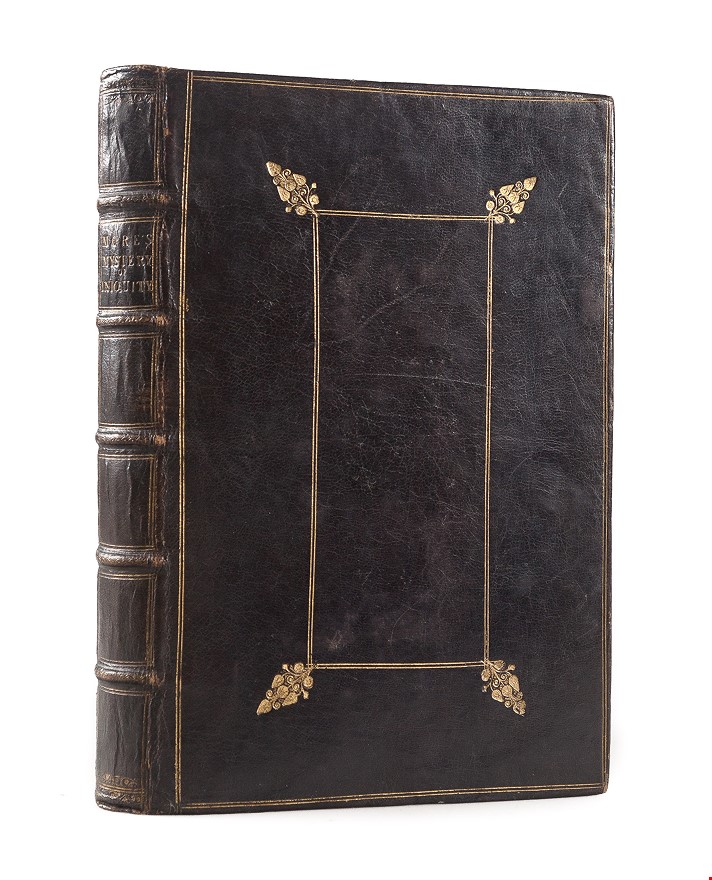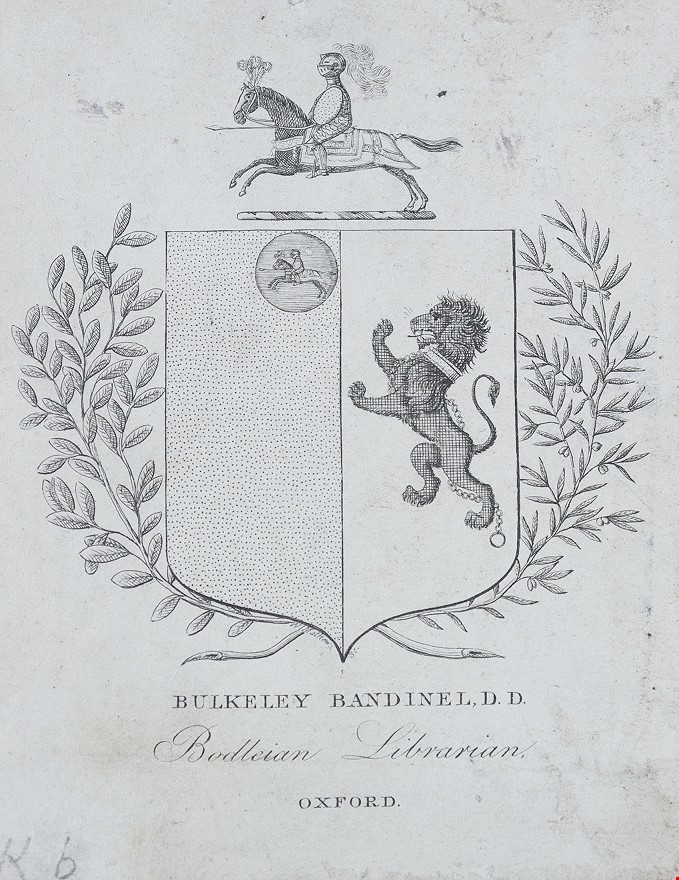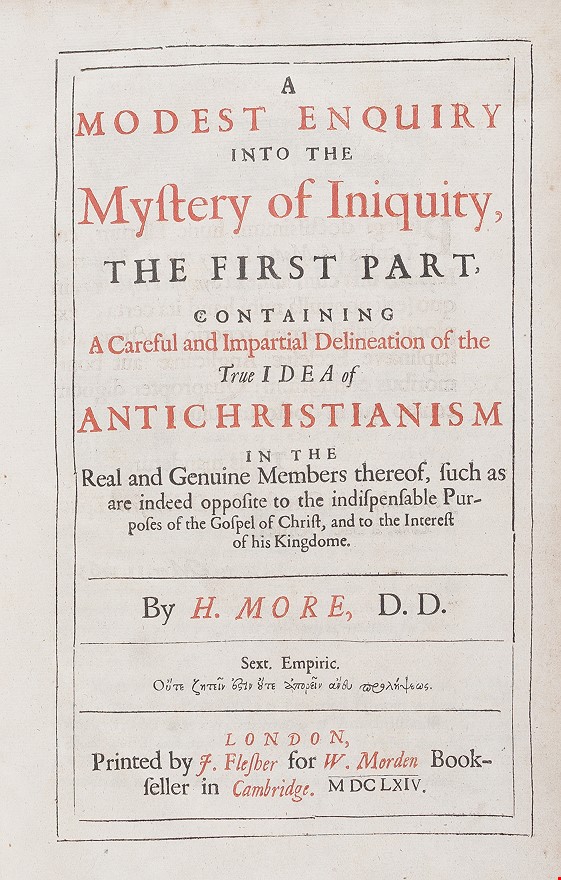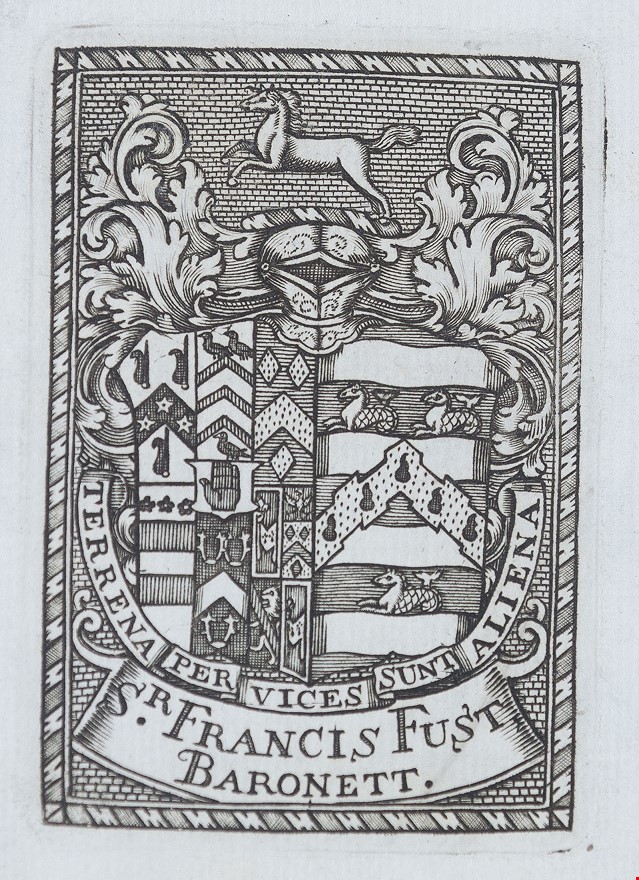A Modest Enquiry into the Mystery of Iniquity,
MORE Henry, D.D. (1664.)
£2850.00 [First Edition]
Please contact us in advance if you would like to view this book at our Curzon Street shop.
FINE COPY IN CONTEMPORARY BLACK MOROCCO
the first part, containing a Careful and Impartial Delineation of the True Idea of Antichristianism in the Real and Genuine Members thereof, such as are indeed opposite to the indispensable Purposes of the Gospel of Christ, and to the Interest of his Kingdome. By H. More, D.D. [- Synopsis Prophetica, or, the Second Part … Containing a Compendious Prospect into those Prophecies of the Holy Scripture, wherein The Reign of Antichrist, or The notorious Lapse or Degeneracy of the Church in all those points comprised in The Idea of Antichristianism, is prefigured or foretold. - The Apology of Dr. Henry More, … Wherein is contained as well a more General Account of the Manner and Scope of his writings as a Particular Explication of several Passages in his Grand Mystery of Godliness.]
First Edition. 3 Parts. Folio. [Binding: 300 x 198 mm]. [12], 478, [22 (Contents of Parts 1 & 2)], [4 (title & preface to The Apology)], 481-567, [5]pp., first title printed in red and black; second part (Synopsis Prophetica) and The Apology of Dr. Henry More have separate title-pages. Blank recto of imprimatur leaf a little dusty, I1-2 and 6 browned and a little spotted, some rust spotting to O2-3 causing a couple of small holes, small rust hole through Y6 (touching a couple of letters), small stain in the blank lower margin of Bb2-6 and Oo4-Pp4, some minor staining to the blank margins of the last couple of gatherings, clear off-set from another title-page of The Apology on the blank verso of the final leaf.
Handsome contemporary black morocco, covers with a double gilt fillet containing a central gilt panel with a tool at each corner, spine with six panels and five raised bands, the panels ruled in gilt, with tooling at the head and foot, gilt edges, comb-marbled pastedowns only (joints and the head and tail of the spine rubbed; early 19th-Century gilt lettering directly on the 2nd spine panel)
London: J. Flesher for W. Morden Bookseller in Cambridge,
Wing M2666. The philosopher-poet and Anglican theologian Henry More (1614-87), a Fellow of Christ’s College, Cambridge, was the, “most prolific of the group of philosophical divines known now as the Cambridge Platonists. He was also a theologian of tolerant stamp who was regarded as a founder of the broad-church movement nicknamed latitudinarianism.” (ODNB).
The once widely used term “Mystery of Iniquity” / “Mystery of Evil” or “Mysterium iniquitatis” of which St Paul warned the Thessalonians - “For the mystery of iniquity doth already work: only he who now letteth will let, until he be taken out of the way.” (KJV, 2 Thess. 2.7) was, as in one of its earlier definitions, “the privy and close working of all impiety against Christ.” (Nicholas Sander, The Rocke of the Churche, Louvain, 1567, p. 448).
In this defence of the post-Restoration Anglican Settlement More, who, with his fellow-Platonist Dr Ralph Cudworth, had been under attack in Cambridge for his Latitudinarianism, links Enthusiasm and Roman Catholicism with Atheism as Antichristianism.
In his essay “Philosophia Cartesiana Triumphati: Henry More (1646-1671)” which considers More’s retreat from Cartesianism from 1646 onwards Alan Gabbey wrote, with respect to More’s “toleration” as one of the ‘Latitude-men,’ that More:
"[Like] several of his equally philosophical countrymen (q.v. John Locke), did not operate beyond the pale of Protestantism. His A Modest Enquiry into the Mystery of Iniquity, the first of several onslaughts against the Romanist menace, was a large-scale examination of Antichristianism, and an exposé of the Antichristian practices of the ‘Imperious Lady of Rome.’ At the same time, the Enquiry was a vigorous defence of the Church of England against the same charge of Antichristianism made by the Protestant nonconformists who were suffering under the impositions of Charles’s parliament, and perhaps more predictably, it defended Anglicanism against the traditional Catholic charge of schism. In the Enquiry, as in other post-1660 writings, More’s concern was to present the Church of England as the natural custodian of the pristine Christian message. For him the reestablishment of the Church of England was ‘the recovery of the Church to her ancient apostolic purity’, a purity that had become lost during the degenerate centuries preceding the Reformation" (Alan Gabbey, in Thomas M. Lennon, John M. Nicholas, John W. Davis, eds, Problems of Cartesianism, McGill-Queen's University Press, 1982, p.171-250; 231).
In his 86-page Apology ... Wherein is contained as well a more General Account of the Manner and Scope of his Writings, which is appended to the main text, More defends himself against charges of heterodoxy or, as he put it, “seeming less true and orthodox to some” in his writings, in particular An Explanation of the Grand Mystery of Godliness (1660). The Apology, “constitutes a careful statement of his understanding of the role and importance of reason in divinity.” (ODNB).
Provenance: 1: Sir Francis Fust, 5th Baronet (1705-69, succ. 1728), of Hill Court, Gloucestershire, with his small armorial bookplate positioned near the foot of the front pastedown [plate size: 90 x 50 mm]; the plate dates to after his succession as baronet (1728) and before his death (1769); judging from its position near the bottom of the front pastedown it may once have been beneath an example of his large bookplate [170 x 95 mm., displaying forty quarterings, all named]; they often appear together. This has long been popular with bookplate collectors so it may well have been removed (very carefully and leaving perhaps just a faint horizontal line near the top) before the next owner, Bulkeley Bandinel, inserted his bookplate. The Fust Baronetcy became extinct with the death of the 6th Baronet in 1779; the library was dispersed following the death in 1841 of Miss Flora Langley (afterwards Langley Fust), a cousin of Miss Fanny Fust (d. 1827). 2: Bulkeley Bandinel (1781-1861), under-librarian at the Bodleian Library (1810-13) and Bodley’s Librarian (1813-60), with his large armorial bookplate on the front pastedown, sale, Sotheby, 16+/8/1861. Samuel Christy, afterwards Christie-Miller (d. 1889), of Britwell Court, with ?his pencil initials “SM” at the foot of the flyleaf and later pencil shelfmark “11. F. 5.” on the verso of the front flyleaf; Britwell Court sale, Sotheby, 4/4/1927, lot 1296 [the bookplates unmentioned], £2 [buyer unknown]. Anon. sale, Sotheby, 19/7/1971, lot 325 [both bookplates mentioned], £50 to W. & G. Foyle (with their pencil note and price £125 on the flyleaf). Anon. sale, Dominic Winter, 14/9/2016, lot 339.
Stock Code: 224658







